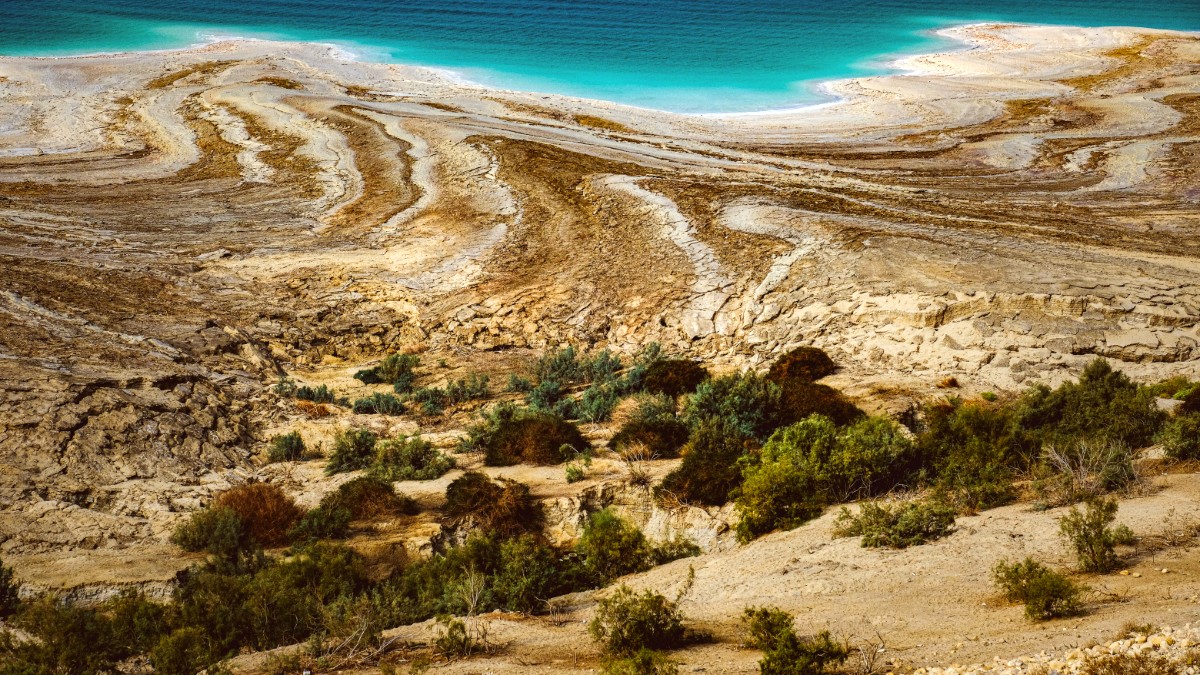
The Dead Sea And Around, Jordan
The Dead Sea is a special position in the minds of travelers, drawing those who seek both adventure and calm. Its name suggests mystery, but the reality involves peaceful calm and natural therapy. Many visitors describe the feeling of floating as dreamlike, a weightless escape. The mineral-rich water and mud attract those looking for benefits, turning a simple dip into a natural spa treatment. Beyond the water, the surrounding landscape speaks of biblical times and geological wonders. The Dead Sea offers a quiet retreat, a place where the air itself feels distinct, clean, and filled with peace. Its beauty lies in its stark contrasts: the deep blue water against the ochre desert, ancient stories next to modern resorts.
Your trip to this region is an adventure, passing through rugged terrain that reflects the deep geological forces shaping this area. Whether seeking therapeutic relaxation, an unique photo opportunity, or a connection to history, the Dead Sea region provides a memorable backdrop for travel stories. This guide describes facets of this destination, ensuring your visit is seamless and full of discovery.
The Dead Sea offers a quiet retreat, a place where the air itself feels distinct, clean, and peaceful. Its beauty lies in stark contrasts: the deep blue water against the ochre desert, ancient stories next to modern resorts.
The Dead Sea, known locally as "Bahr al-Mayyit" (Sea of Death), is a salt lake bordered by Jordan to the east and Israel and the West Bank to the west. It lies in the Jordan Rift Valley, a long depression created by the divergence of the Arabian and African tectonic plates. This geological setting puts the Dead Sea at approximately 430.5 meters (1,412 feet) below sea level, the lowest point on Earth’s land surface. This extreme elevation results in unique atmospheric and climatic conditions. Air pressure here ranks among the highest on Earth, and the increased atmospheric density means the air contains a higher concentration of oxygen.
The Jordan River is the Dead Sea’s main water source, flowing south from the Sea of Galilee. However, the Dead Sea has no outlets. Water departs the lake only through evaporation, a process intensified by the region’s hot, arid climate. This constant evaporation, without any outflow, creates an extremely high concentration of salts and minerals in the remaining water. The Dead Sea’s salinity measures roughly 34.2%, making it almost ten times saltier than the ocean. This extreme saltiness discourages fish and most other aquatic life from thriving, giving the sea its "dead" designation. Microscopic archaea and some types of algae exist in the water.
Characterized by dramatic cliffs, deep wadis (dry riverbeds), and sparse vegetation.
Jordan's resorts and attractions feature a narrow coastal plain backed by steep, reddish-brown mountains.
Mountains offer stunning views and a rugged backdrop to the calm waters.
Salt formations, sinkholes, and a constantly receding shoreline.
The Dead Sea diminishes rapidly due to water diversion from the Jordan River for agricultural and industrial uses.
The region’s climate remains consistently warm and dry, with very low humidity. Summers feature extreme heat, with temperatures often above 40°C (104°F). Winters are mild and pleasant, with daytime temperatures around 20-25°C (68-77°F). Rainfall is minimal and occurs mainly in the winter months, but heavy downpours can create flash floods in the wadis, transforming dry riverbeds into rushing torrents.
The Dead Sea's low elevation filters UV radiation partially due to the thicker atmosphere. Still, use sunscreen and seek shade, as the sun remains intense.
The unique combination of extreme aridity, high salinity, and the lowest elevation on Earth creates an ecosystem and landscape found nowhere else, making the Dead Sea a marvel of natural geography.
Always use sunscreen and seek shade, as the sun remains intense, even with the thicker atmosphere.
The Dead Sea region is a deep connection to ancient history and religious narratives, appearing in texts from various faiths. Its dramatic landscape and unique properties have shaped stories and settlements for thousands of years. The area is perhaps most famously linked to biblical events, notably those found in the Old Testament. The cities of Sodom and Gomorrah, often associated with divine judgment, are traditionally believed to have existed in this fertile plain before their destruction. While archaeological evidence for these specific cities still sees discussion, sites like Bab edh-Dhra and Numeira, located south of the Dead Sea, have yielded Bronze Age ruins that some scholars associate with these biblical narratives.
Another significant biblical connection concerns Lot’s Cave, located near Ghor al-Safi on the southeastern Dead Sea plain. This cave traditionally holds identity as the refuge for Lot and his daughters after their escape from Sodom. Archaeological excavations at the site uncovered Byzantine church ruins, reflecting its importance as a pilgrimage destination for early Christians. This site offers a quiet moment of reflection, allowing visitors to connect with ancient stories.
An UNESCO World Heritage site, traditionally recognized as where John the Baptist baptized Jesus Christ.
Sweeping views across the Jordan Valley, the Dead Sea, and, on a clear day, to the Holy Land. Moses is said to have viewed the Promised Land from here.
Located on the western side of the Dead Sea, these caves yielded the Dead Sea Scrolls, ancient Jewish religious manuscripts.
In Roman and Byzantine times, the Dead Sea’s therapeutic properties gained recognition. Historical accounts mention King Herod the Great used the Dead Sea as a health resort. The Romans established settlements and forts in the area, drawn by its strategic location and unique resources.